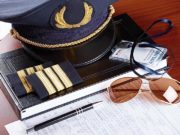The Australian Transport Safety Bureau (ATSB) will seek to improve its efficiency by becoming “more data-driven,” Chief Commissioner/CEO Greg Hood says in the ATSB’s recently released Annual Report 2015-2016. The report covers the year ended June 30. 2016.
Hood, who became ATSB chief commissioner/CEO in July, said in his outlook for 2016-2017 that he while he is proud to lead a “world-class and lean” transport safety investigative agency, “I am keen to reshape how we commit our limited resources to improve safety for the travelling public.”
He said that ATSB has a rich national information dataset of all safety-related occurrences in aviation, as well accidents and significant safety occurrences in the marine and rail sectors, that already is used to identify safety trends in all three sectors. “[B]ut I would like to do so more actively. In doing so, we will be able to more selectively allocate our limited resources to investigating those accidents and incidents that have the greatest
potential for improving safety.” Hood went to say that if there is “no obvious public safety benefit” to investigating an accident, the ATSB is less likely to conduct a complex, resource-intensive investigation.
ATSB will continue investigating the majority of accidents and serious incidents involving the travelling public because that is where there is the greatest risk of fatalities and the greatest likelihood of finding significant safety issues that lead to important safety actions, Hood said. When it comes to general aviation accidents, however, “we will need to carefully consider the resources we allocate to investigations into general aviation fatal accidents and constrain the scope of investigations into non-fatal accidents in this sector.”
Limited Resources
The availability of resources was a theme throughout Hood’s 2015-16 review. He said the agency has continued to experience safety reductions to its base appropriations with further reductions expected. As a result, ATSB has reduced its core staffing profile, including specialist investigators, by 25 percent since July 2009, when it was established an an independent statutory authority.
ATSB continues to maintain a capacity to record, analyze and research safety data and produce timely reports on safety trends and other research publications, he said, but has limited capacity to foster safety awareness, knowledge and action through safety education. The agency has relied heavily on social media to disseminate key safety messages, Hood said, adding later that safety education is key to addressing the types of accidents and incidents that recur in general aviation.
Among the challenges facing ATSB are technology, specifically technology involving unmanned aircraft systems, or drones, and how it investigates and monitors the safety of an increasing number of low-cost carriers operating in Australia.
“Technology is already having an influence on our work,” Hood said. “The use of remotely-piloted aircraft is increasing significantly — pizza delivery by drone is reportedly imminent.”
Hood also addressed the drive for greater use of data in a speech last in Canberra, Australia. Click here to view an article that appeared in Australian Aviation.



